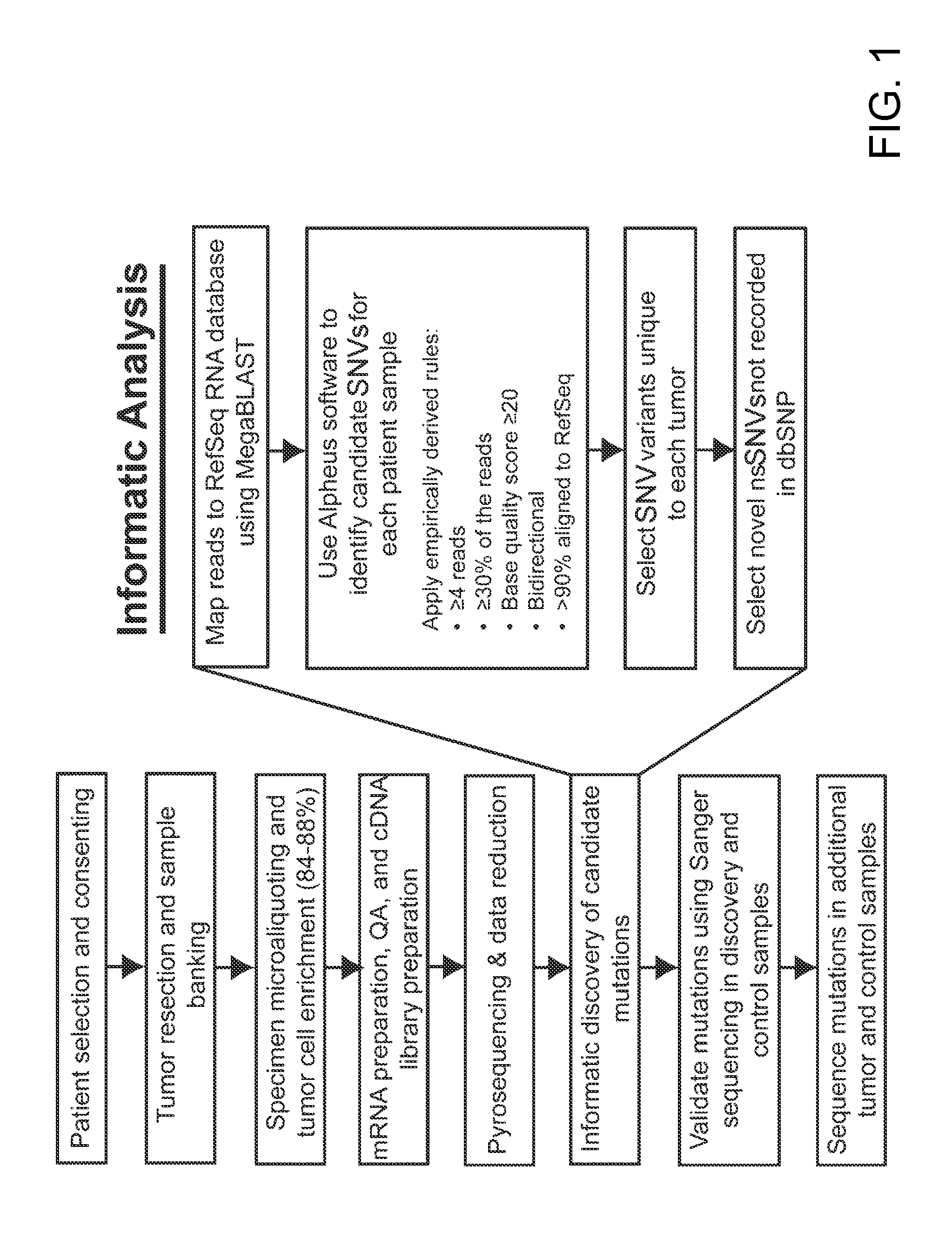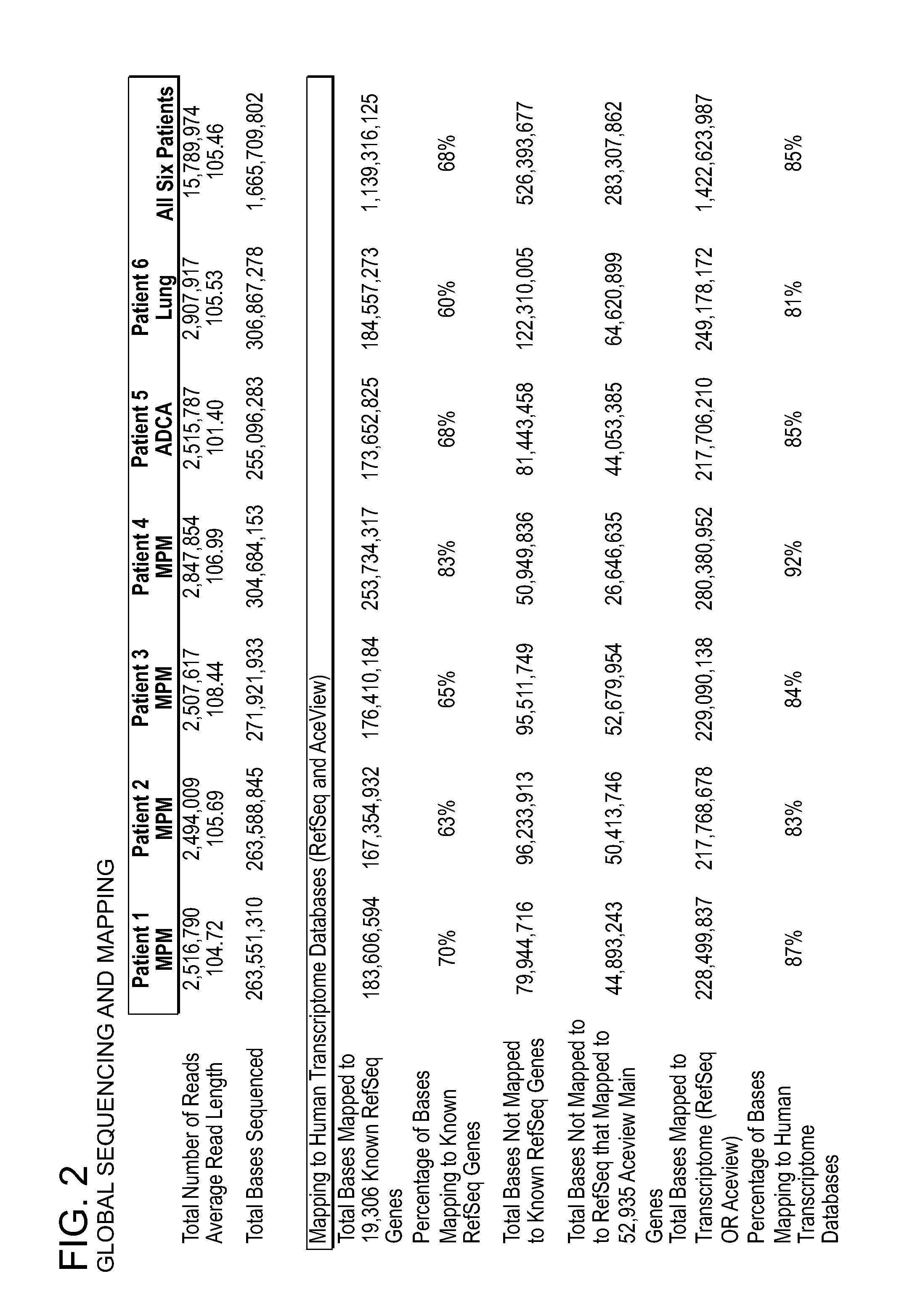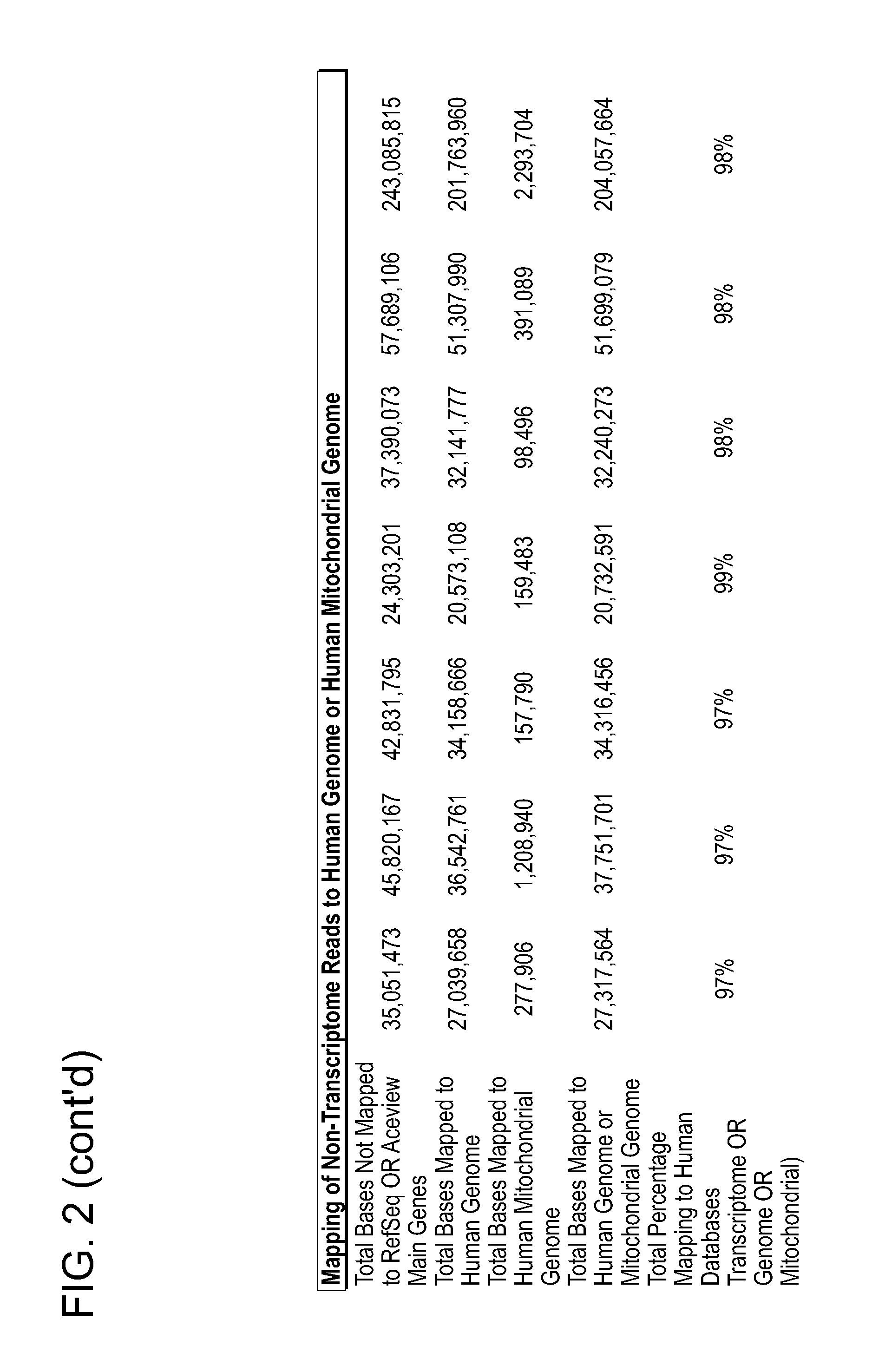Disease-associated genetic variations and methods for obtaining and using same
a technology applied in the field of disease-associated genetic variations and methods for obtaining and using same, can solve the problems of ineffective mpm therapy, severe limitations of mpm therapies, and insufficient methods for understanding diseases with greater degrees of genetic complexity
- Summary
- Abstract
- Description
- Claims
- Application Information
AI Technical Summary
Benefits of technology
Problems solved by technology
Method used
Image
Examples
example 1
Tumor Transcriptome Sequencing and Global Analysis (FIG. 1)
Source of Tumor Samples
[0192]Tumors were harvested in the operating room from consenting patients and immediately dissected to generate high-quality fresh-frozen specimens. Samples were obtained from four patients, representing the clinical spectrum of MPM, who underwent pleurectomy / decortication or extrapleural pneumonectomy (Chang and Sugarbaker, Thoracic Surg Clin, 2004, 14:523-530). Patient 1 was a 75-year-old male with asbestos exposure history. Patient 2 had epithelial MPM and was a 39-year-old female with no history of asbestos exposure. Patients 3 had nonepithelial sarcomatoid MPM. Patient 4 had mixed epithelial and sarcomatoid (“mixed”) MPM. For comparison, a tumor was obtained from a patient (Patient 5) with adenocarcinoma (ADCA) of the lung and a normal nontumor lung tissue was obtained from a patient (Patient 6) with mixed MPM. To examine the prevalence of specific mutations discovered in these six tumors, 49 add...
example 2
Gene Coverage and Expression
[0237]In each sample, ˜15,000 Known RefSeq Genes were detected by alignment of one or more reads, indicating expression of 75% of the Known RefSeq mRNA entries (FIG. 2, FIG. 3 and FIG. 4A). Furthermore, when combined, a total of 17,500 non-redundant Known RefSeq Genes were detected in the 6 samples; approximately 17,000 non-redundant Known RefSeq Genes were similarly observed when the data from only the 4 MPM cases were combined (data not shown). At the depth of coverage selected, few additional transcripts were identified by further increasing the numbers of reads (FIG. 4A), indicating that >90% of the expressed genes in each of the samples were detected. Of the 15,000 observed transcripts, many are represented by only a few reads which would arise either from low abundance cell types in the sample or transcriptional “leakage”.
[0238]A prior study using massive parallel signature sequencing (MPSS) of mRNAs in human tissues concluded that only 50% of the g...
example 3
Bioinformatic Discovery of SNP Variants (Rules for SNP Discovery)
[0241]Software systems for DNA sequence variant discovery that are based upon Sanger chemistry and base-calling algorithms are inadequate for novel DNA sequencing technologies that feature short read lengths, novel base-calling and quality score determination methods, and relatively poorly characterized error profiles (20). Alpheus, an internet-accessible software system that maps individual reads to the NCBI RefSeq RNA database and identifies sequence level variants (accessible at impmeso.org), was developed to facilitate visualization and automated analysis of high-throughput 454 sequencing data. Filter parameters include patient sample, gene name, read coverage, variant frequency, variant type, variant location and hyperlinks to NCBI sequence and gene function databases.
[0242]Assessment of putative sequence variants identified by analysis of unfiltered 454 sequencing data revealed an unacceptably high number of fals...
PUM
 Login to View More
Login to View More Abstract
Description
Claims
Application Information
 Login to View More
Login to View More - R&D
- Intellectual Property
- Life Sciences
- Materials
- Tech Scout
- Unparalleled Data Quality
- Higher Quality Content
- 60% Fewer Hallucinations
Browse by: Latest US Patents, China's latest patents, Technical Efficacy Thesaurus, Application Domain, Technology Topic, Popular Technical Reports.
© 2025 PatSnap. All rights reserved.Legal|Privacy policy|Modern Slavery Act Transparency Statement|Sitemap|About US| Contact US: help@patsnap.com



